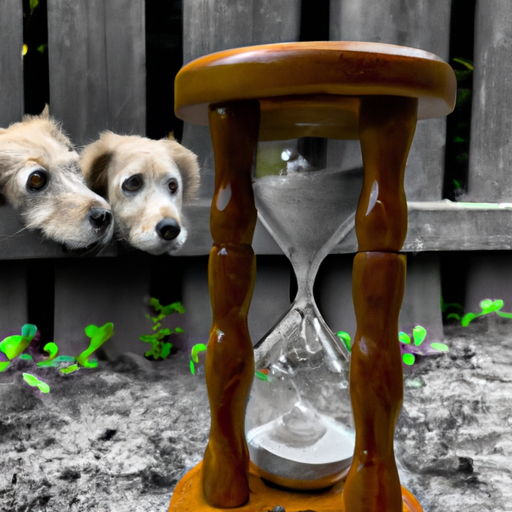As a dedicated caregiver, understanding the intricacies of your beloved pet’s behavior is imperative. Especially when it comes to what is commonly referred to as the “locking” phase during breeding. In this context, “locked up” refers to when two dogs mate, a period during which they are inseparably attached for a certain duration.
Understanding the “Locking” Phenomenon
This unique biological occurrence is known as ‘copulatory tie’, ‘coital tie’, or simply ‘tie’. In this phase, the male dog’s bulbous glandis (at the base of the penis) swells up, and the female dog’s vagina contracts, effectively locking the two dogs together. This is a natural phenomenon and is part of the dog reproduction process.
The ‘locking’ ensures successful insemination as it keeps the male’s sperm inside the female, thereby increasing the chances of fertilization. It’s a fascinating yet often misunderstood aspect of canine behavior. As a caregiver, it’s essential to understand this to ensure the wellbeing of your pet.
The Duration of the Locking Phase
The time frame for this phase varies widely. It can typically last anywhere from 2 minutes to 30 minutes. However, in some instances, it may extend up to an hour. Here’s a general breakdown:
| Duration | Frequency |
|---|---|
| 2-5 minutes | Less Common |
| 15-30 minutes | More Common |
| Up to 1 hour | Rare |
These durations are estimates; the actual length may vary based on several factors, including the dogs’ age, health, and breed.
How to Handle the Locking Phase
As a caregiver, it’s crucial to handle this situation with utmost care and patience. Here are a few pointers:
- Do Not Panic: The sight of your dogs ‘locked’ can be alarming, but remember, it’s a natural process.
- Do Not Attempt to Separate Them: Interference can cause physical harm to your pets.
- Ensure a Safe and Calm Environment: This will help minimize stress for both you and your pets.
Remember, this is a sensitive time for them. Your role is to ensure their safety and comfort during this process.
The Aftermath of the Locking Phase
After the ‘lock’, your pets might seem a bit disoriented or tired. It’s normal. They might also engage in cleaning themselves. Allow them this time to recuperate and ensure they have access to fresh water.
Preparing for Possible Puppies
If you’re not planning for puppies, it’s essential to get your dogs spayed or neutered. However, if they’ve already ‘locked’, be prepared for the possibility of puppies. You’ll need to provide the female dog with extra care and nutrition, and prepare a whelping box.
FAQ
How can I prevent my dogs from ‘locking’?
If you don’t want puppies, consider getting your pets spayed or neutered.
Is it harmful for dogs to be ‘locked’ for a long time?
While it can be distressing, it’s not usually harmful. However, if it lasts longer than an hour, contact a vet.
How do I know if my dog is pregnant after the ‘lock’?
Signs of pregnancy may not appear until a month after mating. A vet can confirm pregnancy through ultrasound or tests.
Can I separate the dogs during the ‘lock’?
No, attempting to separate them can cause physical harm.
What’s the role of the caregiver during the ‘lock’?
Ensure a calm and safe environment, and do not attempt to separate the dogs. After the ‘lock’, make sure they have access to fresh water.
This guide aims to demystify the ‘locking’ phenomenon in dogs and provide caregivers with helpful insights. As always, consult with a vet for personalized advice about your pets.



